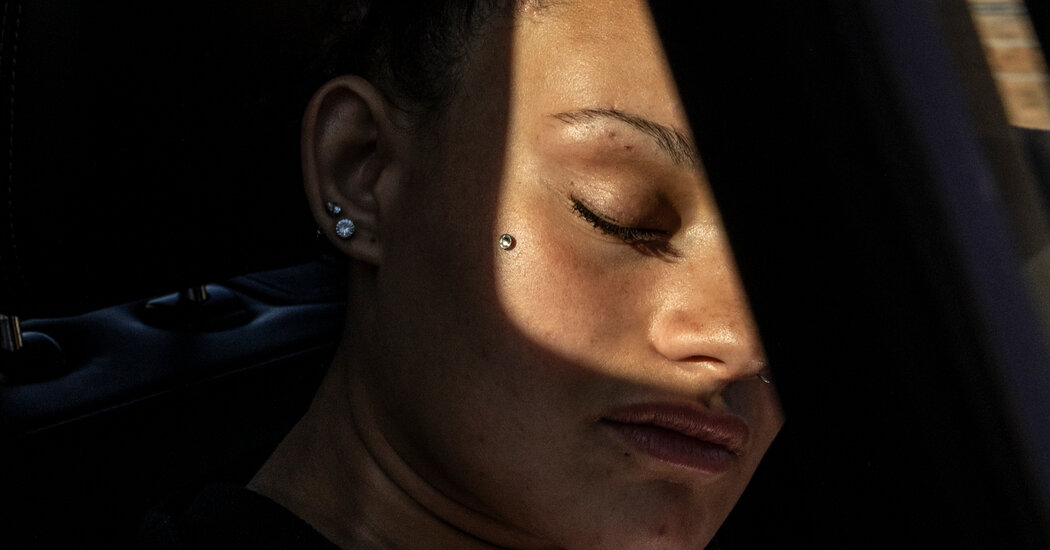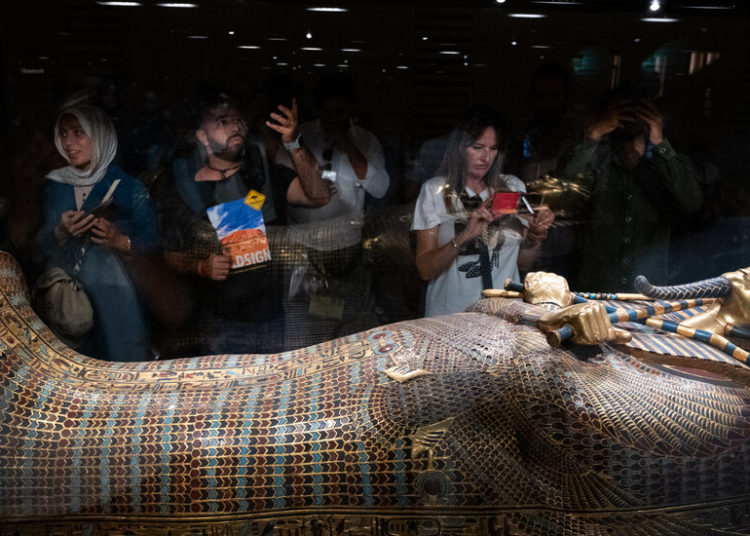John once fielded customer complaints for a telecommunications company. Now he usually hangs out with friends in the courtyard of a center offering services to help people who use drugs, hitting his pipe, or as he calls it, “getting methicated.”
He usually lives outdoors, though he can sometimes handle a few days at a shelter. By noon, he tries to stop smoking meth, so he can get to sleep later that night. Quitting is not on his radar: meth rules his life. “We cannot ride on the railroad, the railroad rides upon us,” he said, with a nod to Henry David Thoreau.
Most weekdays, Bill Burns, an addiction and mental health specialist with the Portland police, walks the Bayside neighborhood, checking in on folks. On Thursdays, he rewards the regulars he drives to addiction treatment clinics with his own homemade jolts of dopamine: sugar-dense, Rice Krispie-style treats.
Recently, he encountered a young man in full meth psychosis, wild-eyed, bare-chested and bleeding, flinging himself against concrete barriers in an alley. Mr. Burns slipped between the man and a brick wall and wrapped his arms protectively around him.
Even as the man flailed uncontrollably, smacking Mr. Burns and smearing blood on his shirt, he managed to stammer, “Sorry!” Speaking softly, Mr. Burns kept repeating, “You’re going to be safe. You’re OK. We’re here because we just want to make sure you’re safe. No, you’re not in trouble. Nobody wants to hurt you. ”
Kailan takes daily medication to keep her opioid use in check, but says she is just not ready to let go of meth, which she calls, with some bitterness, “her best friend.” One day, early in the pandemic, when she was newly unemployed and alone in her room, she found out that meth had landed full force in Portland.
“I was telling myself, ‘Don’t go down to the block. Stay sober. Don’t go,’ ” she said. “I intended to get some Adderalls, which was my original favorite drug of choice. I couldn’t find my friend and I ran into someone else who gave me a pebble of meth. After that, it was all history. Every day.”
Malia Haddock, a psychiatric nurse practitioner, drives a clinic van to parks, under bridges and alongside icy embankments that descend to huddled tents. She is keenly aware that her patients’ occasional frenetic behavior unnerves neighborhood residents.
“People who are housed have a degree of concealment when they struggle with psychiatric and substance use disorders,” she said. “But if they are unsheltered and using methamphetamine, they are going to develop psychotic symptoms in public.”
In the early morning darkness, just before the start of her shift at a health clinic for the homeless, Courtney Pladsen, a family nurse practitioner and addiction specialist, disposes of the drug paraphernalia glittering on the sidewalks. She waves to patients as they emerge from sleeping bags for a wake-up hit of meth, before the cops shoo them away.
“I hate meth so much,” she said. “Health care providers are just having to hold and support so much suffering in a way that we don’t experience with opioids. Meth just turns up the volume and the intensity in ways that make things so much more complicated for our patients and for us.”
Kiki left home as a teenager, moved to Portland and, during the pandemic, fell hard into meth. About a year ago, after she landed in the hospital with severe stomach problems aggravated by her meth use, she forced herself to quit the drug. For months she slept in an abandoned parking garage, its walls covered with murals drawn by people when they were flying on meth.
Since stopping meth, she has been locked in battle with fentanyl. “At least I’m not the monster I was,” she said. “On meth, I was a very bad person.”
For nearly two decades, Sarah Michniewicz, a new City Council member, has owned a small house just around the corner from a shelter. The meth surge stiffened her spine and sharpened her gallows humor: she has come upon meth users shooting up in her backyard, having sex in her driveway and stashing drugs in her flower beds.
“When the snow recedes, you find all these needles and orange caps everywhere. We refer to them as Bayside tulips,” she said. “I’m not trying to be disrespectful of anyone’s struggle. It is what it is.”
There was nothing like the rush that Jaimee and Joey felt after injecting meth. Everything looked brighter. Sounds were sharper. Sex was great. Jaimee, a former preschool teacher, would write poetry nonstop. But when the rush passed, they couldn’t eat or sleep for days. Then, when Joey was walking in the street, a truck hit him and backed up over his prone body.
“His accident stopped us doing meth,” Jaimee said. “There was no way I was having someone who was broken and relearning how to walk, with a walker, do a meth shot, because meth just makes you want to go, go, go. You can’t sit still, especially him. So our drug use just wasn’t that important.”
Courtney Bass colors her hair with purple streaks in solidarity with survivors of domestic violence, which she is herself. She has also been in recovery for nine years from alcohol, cocaine and benzodiazepines (tranquilizers), and is a licensed drug and alcohol counselor. Now an outreach worker for a social services program, she scours the city with crates of sandwiches and water bottles, asking folks if they want to come in to a shelter, a detox unit or try a sober living house. She sees herself as a bridge between the needy and what they need.
Sheis often called in to help people who are “tweaking” on meth, a stage when they can be ranting and hallucinating. When they are in that escalated state, however, hospitals and shelters usually won’t admit them.
“What are we supposed to do?” she said. “Meth makes it really difficult. We try to relocate them, give them food and water, and hope that the meth wears off. But, I mean, that’s not a solution.”
Produced by Antonio de Luca, Matt McCann and Elijah Walker.
Jan Hoffman is a health reporter for The Times covering drug addiction and health law.
The post Faces From a Meth Surge appeared first on New York Times.




